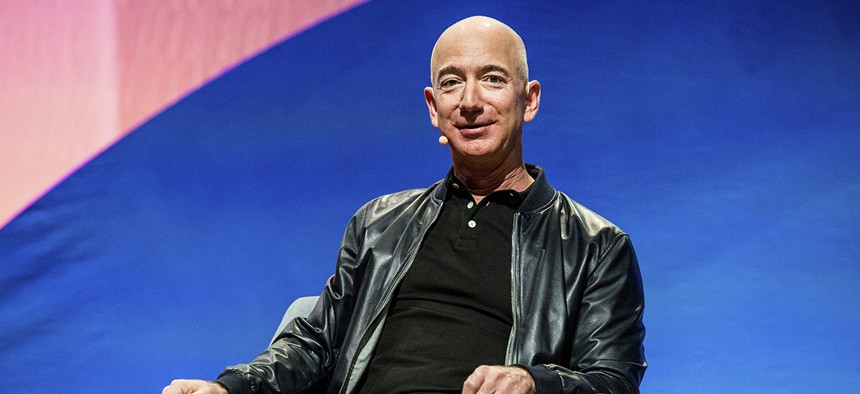To Master Health Care, Amazon Must Master Information And Communication

Jeff Bezos, founder and CEO of Amazon Amy Harris/Invision/AP
Health care is a little different than selling books.
Health care stocks swooned when Amazon announced its plan to form a non-profit health-care company for its US employees. Headlines like “Will Amazon do to health care what it did to books?” raised the prospect that Amazon CEO Jeff Bezos would bring his hard-nosed bargaining style and Amazon’s vast technology resources to bear on health-care providers and pharmaceutical companies.
That may well be a component of the strategy as Amazon and its partners—Berkshire Hathaway and JP Morgan Chase—attack the formidable challenge of driving down health-care costs and delivering better health care. The three titans can use their heft to demand better pricing and to vertically integrate, forming their own health care clinics and drug-distribution networks for instance.
But that’s the easy part. What I’ll be fascinated to see is whether Amazon understands the true, fundamental problem in health care: improving communications among health-care providers, consumers, and the companies that pay for their care.
Amazon knows all about retailing and discounting. Presumably it also has the trust of its employees. And no one is more capable of developing what it describes as “technology solutions that will provide U.S. employees and their families with simplified, high-quality and transparent health care at a reasonable cost.” But to deliver on its ambition to revolutionize health care, it will have to put all of those advantages to work to ensure its employees get the best information, at the right time, in a way they can understand.
The health-insurance industry has already begun moving in this direction, starting with the passage of the Affordable Care Act in 2009. CVS’s $69 billion agreement to buy Aetna sent another shot across the industry’s bow, signaling the entry of a consumer giant into the highly consumer-unfriendly health insurance business (in most consumers surveys, health insurers rank somewhere close to cable companies)
Traditional insurers still have a big advantage, with their huge installed base of customers and technology. For them, building a more efficient, consumer-friendly organization means cleaning up the tangle of systems and software that has accumulated as they’ve grown by bolting on various divisions and functions through acquisitions. Now many are trying to do just that, without ripping out all those systems, endeavoring to create a single, universal screen—for members and employees—that can be personalized based on an individual’s role and level of access.
Amazon may be starting with a clean slate, technology-wise, but that doesn’t mean it will be easy. Just creating effective communication from the payer (Amazon in this case) to the member is incredibly difficult. First, the language of health care is complex, so Amazon will need to continue to invest heavily in creating simple language to explain options and costs to employees. That will require a deep understanding of how to stratify and segment members into different cohorts, along with an army of data scientists and advanced technologies. If they can do this across a diverse employee population—in terms of gender and race but also geography, lifestyle and income level; all key factors in a person’s health profile—with vastly different health profiles and issues, Amazon can create highly specific messages on a member-by-member basis. So an employee at risk for diabetes might get emails about diet and weight; someone who lives near a major flu outbreak might get text reminders about free flu shots.
Second, health information is supremely personal, and these companies employ diverse populations. So the wording and styling of messages will resonate differently among each group, and among individual members. A message that one person finds useful and helpfully concise may cause an anxiety attack in another. Whether it’s the language, the tone, or the medium, these factors and others determine whether messages are effective in getting people to take the actions that keep them healthy, avoiding the expensive procedures, prescriptions and hospitalizations that drive up the cost of health care. I think it will take a bit of iteration for Amazon to get this right.
If Amazon gets that formula right, though, it could crack the code. Getting consumers more engaged with the health care requires delivering that information when they need it, in a way they understand and are motivated by, and then following their progress to be sure they’re taking the proper steps is the key to making health insurance work—whether it’s a for-profit or non-profit entity we’re talking about.
Health insurers—or the non-profit Amazon and its partners are building—have the potential to serve as high-fidelity conduits for information among the three key constituencies. With the right platforms in place, they can layer on predictive analytics, digitalization of medical records and other technology to drive down costs even further.
Traditional health insurers have to do all this while developing consumer-friendly marketing strategies, holding down premiums to gain market share and, in many cases, turning a profit. Amazon and its partners don’t need to worry so much about marketing, and not at all about margins, but they will have to deliver lower costs if this venture is to justify the enormous investment the companies are putting into it. If they get the communications part right, I’m betting the rest will fall into place.
NEXT STORY: A Long-Lost NASA Spacecraft Rises From the Dead


